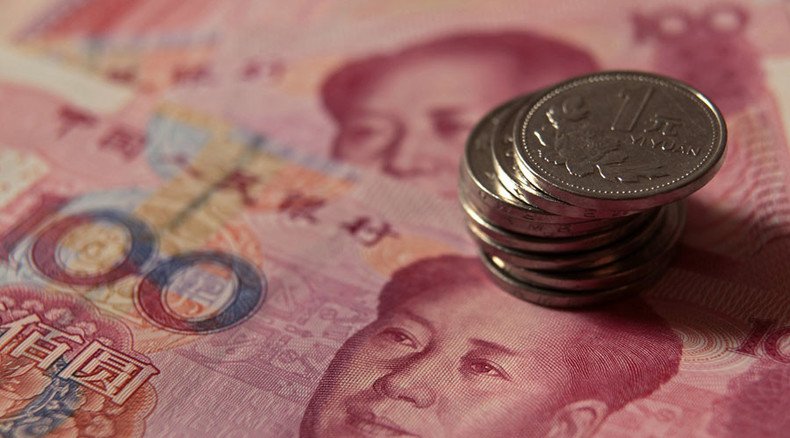China stages biggest currency devaluation in 20 yrs to revive exports

The central bank of China has cut its daily reference rate by 1.9 percent, making its biggest downward adjustment since 1994. The People’s Bank insists Tuesday’s measures are a one-off aimed at reviving faltering exports.
The bank’s announcement prompted the yuan exchange rate to tumble against the US dollar. As of 8:15am GMT on Tuesday, the yuan (renminbi) was trading at 6.33 to the dollar, 1.9 percent lower than Monday.
#China devalues the yuan by most in two decades http://t.co/7dr41vqyCO@businesspic.twitter.com/frZ3JfgCSf
— Richard Bravo (@richbravo2) August 11, 2015Over the weekend, Beijing said July exports dropped 8.3 percent, compared to a year before. The weaker the yuan, the bigger revenues exporters get from their foreign sales.
The tough move may also indicate that Beijing is allowing the market more freedom to determine the yuan rate.
“The People’s Bank of China has astutely combined a move to weaken the yuan with a shift to a more market-determined exchange rate,” Eswar Prasad, a Cornell University professor and former China representative of the IMF told the Wall Street Journal.
Becky Liu, a Hong Kong-based senior strategist for Standard Chartered, said the bank’s move was “big… and bolder” than predicted.
“The new fixing will be quoted based on the previous day’s closing, which is a real market level. The band will become the real band. This is a big step, and bolder than we expected,” she told Bloomberg News.
Tuesday’s devaluation comes a decade after Beijing’s key decision to replace the hard peg against the US dollar by a link to a basket of currencies. The exchange rate was simultaneously set within a band of around 8.11 to the US dollar, marking a 2.1 percent move from an 8.28 yuan exchange rate in place before 2005. In those 10 years, the yuan has risen 33 percent, becoming one of the world’s most-traded currencies, while Beijing has staked out its position as the world’s second-biggest economy.
The adjustment could complicate Beijing’s goal of making the yuan the world’s leading currency. On the other hand, becoming more market-oriented is a solid step towards greater openness.












